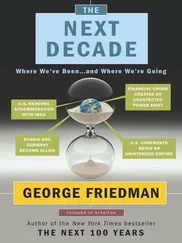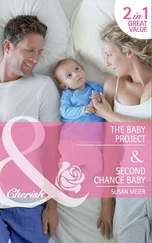The better-educated Terman participants did tend to live longer than their equally bright peers. But as we described in chapter 6, level of education was not a strong predictor of later health and longevity, especially as compared to other individual, social, and career predictors. Rather, it was the high expectations, perseverance, and the patterns of accomplishment that were important.
If you are better educated and more productive in life—successful at work and likely to continue to grow and be creative—the success flows over into other domains of your life. This means that education per se is not enough. Instead, it is becoming the kind of person who is able and motivated to take the helm through life’s personal and social passages that makes the biggest difference.
What It Means for You: Guideposts to Health and Long Life
Edward Dmytryk’s mother died when he was very young, and he had a rough childhood. He lived a life full of great challenges and great successes and now rests in Forest Lawn Cemetery in the Hollywood Hills of Los Angeles. He lived ninety years and his films will live on for many more. Mr. Dmytryk and his fellow hardworking, stressed, but successful Terman subjects were the ones who thrived. It was not at all the case that hard work was unhealthy, and it was not at all true that the long-lived led uninteresting lives.
Like Shelley Smith Mydans, many of the long-living Terman participants faced times when they had to do such things as pick weevils out of their cereal. What our research makes clear is that working hard to overcome adversity or biting off more than you can chew—and then chewing it—does not generally pose a health risk. Striving to accomplish your goals, setting new aims when milestones are reached, and staying engaged and productive are exactly what those following the guideposts to a long life tend to do. The long-lived didn’t shy away from hard work for fear that the stress of it would lead to an early demise; the exact opposite seems true!
Finding the perfect career to match your personality and preferences is not the way to guarantee success or long life. Many Terman subjects found themselves in less-than-ideal jobs and yet attained great success and satisfaction. Others who did find a perfect career match ended up risking their health because occupational demands accentuated their natural tendencies toward unhealthy patterns. Instead of their smarts or the career counseling they received, it was their spirited drive and take-charge attitude that spurred the successful Terman participants toward accomplishment and, surprisingly, to especially long lives.
What the Wizard said to the Scarecrow, “Anybody can have a brain,” could just as easily have been something Dr. Terman said to his subjects. They were all quite smart, but this was not enough to take them very far. Being intelligent was not a ticket to long life, but channeling knowledge and smarts toward productive achievement was.
CHAPTER 11
Long Life Meets the Afterlife
Religion and Health
Religion played a different role in Linda’s, John’s, and Donna’s lives. Linda was raised Catholic and attended Sunday school most weeks. At age twenty, she married a Catholic man and they remained active together in their church throughout their lives. John, in contrast, lived pretty much without religious involvement. As a young adult, he focused on his career and never developed an interest in congregational religion. Donna was more representative of most of the Terman participants: in her twenties she was somewhat interested in her Lutheran church, and during the decade that followed she became further involved, bringing her children to Sunday school. She was never as devoted as Linda, however, and her religious involvement gradually waned as her children grew up and left home.
Was religious involvement relevant to the health and long life of the Terman participants? Overall in the United States, we know that religious people tend to be healthier and live somewhat longer than the nonreligious, but there is a lot of individual variation. 76 76 For a review of religion and health see M. E. McCullough, W. T. Hoyt, D. B. Larson, H. G. Koenig, and C. E. Thoresen, “Religious Involvement and Mortality: A Meta-Analytic Review,” Health Psychology 19 (2000): 211-22.
Similar results have emerged from other studies in Europe and Asia. Why do religious folks stay healthier and live longer? Does praying make a difference?
Ancient advice about long life comes from the biblical book of Exodus, where one of the Ten Commandments instructs, “Honor your father and your mother so that you may have a long life in the land which the Lord God is giving you.” Among the many commentaries on this stark verse, three are highly relevant to the issue of religion and health. The first interpretation is that those who live a righteous life will be blessed with long life. A second, alternative interpretation asserts that the honoring of parents is necessary for the nation (or people) to remain in the Holy Land. A third interpretation is that a harmonious, respectful family life and social structure will lead to a stable civilization and long healthy lives. These age-old thoughts turned out to provide an excellent framework for our modern thinking about families, religion, social relations, and health.
Sometimes religion can be dangerous to health. People who shun modern medical treatment in favor of faith healing can cause great harm to themselves or their ill family members. A few religious groups have become cults that advocate violence or antiscientific practices. But such groups are a minority, and we are focusing our research attention on mainstream religious organizations that are compatible with modern life and scientific knowledge.
People often ask us if praying leads to better health and longer life. The questioner may be asking either if religious devotion and the associated psychosocial characteristics affect health or if intercessory prayer does. There have been a number of studies on intercessory prayer—examining whether praying for a sick person can lead to recovery via divine intervention. Some of them try to be very scientific. That is, they may have a control group (a comparison group) of ill people who are not prayed for. But it would be disappointing for many ill folks to know that no one is praying for them. So a study may go even further and be a double-blind study, in which neither the doctor nor the patient knows who is being systematically prayed for and who is not. Intellectual interest in such matters traces back several hundred years to the Scottish philosopher David Hume, who wrote about the reasoning and evidence needed to establish the existence of miracles. 77 77 For philosopher David Hume’s essay, see An Enquiry concerning Human Understanding , published in 1748.
From a psychological point of view, these arguments are fascinating. Most proponents of intercessory prayer present it as an article of faith. For most scientists, however, faith in supernatural forces is outside their realm. This does not mean that scientists cannot have faith in the supernatural, just that such ideas depend wholly upon, well, faith. By definition, supernatural means “beyond the natural,” and unexplainable by scientific law.
So why would someone design a scientific experiment to try to test an article of faith? We think that such attempts arise repeatedly in a society that is too willing to underestimate the psychological, social, and behavioral influences on health and well-being. Because the “science” of modern medicine is often too quick to reduce health to simple mechanical cause-and-effect relations, many patients feel a dissatisfaction and frustration with medical care. They “know” that a good family life (honoring father and mother) and devotion to others can lead to good health. Our studies of the Terman participants, as well as studies by others, convinced us that good health is indeed a much more complicated phenomenon and that religion provides a good insight into pathways to long life.
Читать дальше











